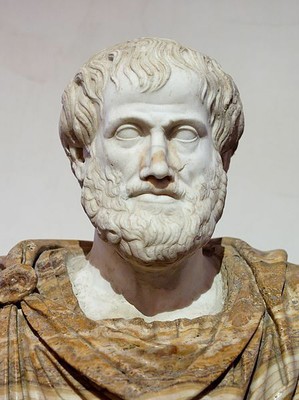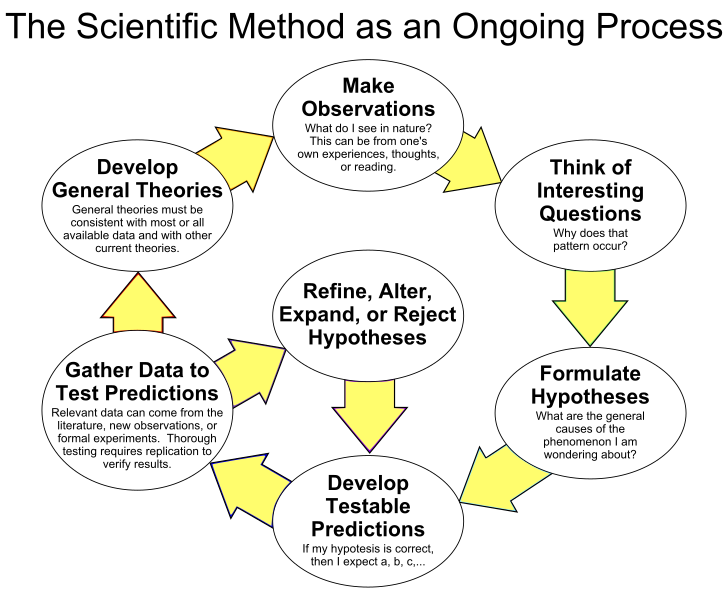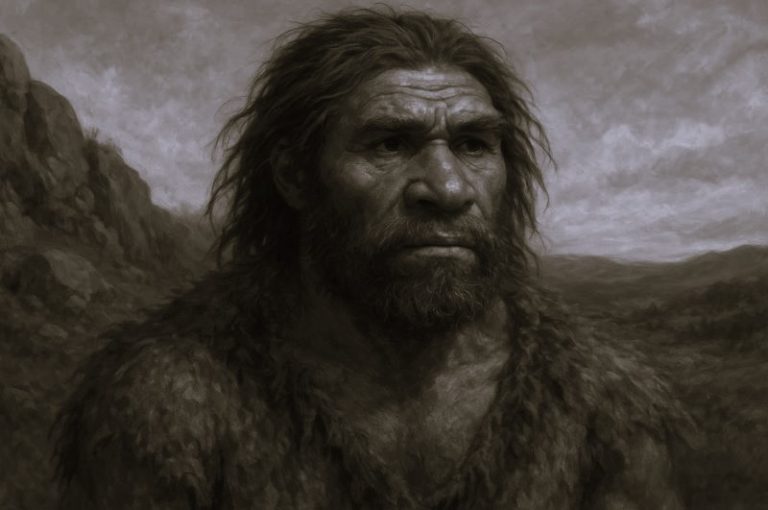

Introduction
Before this time, Europeans relied on two main sources for their understanding of nature. One was the Bible and religious teachings. The other was the work of classical thinkers, especially the philosopher Aristotle.
During the Scientific Revolution, scientists challenged traditional teachings about nature. They asked fresh questions, and they answered them in new ways. Inventions like the telescope showed them a universe no one had imagined before. Careful observation also revealed errors in accepted ideas about the physical world.
A good example is Aristotle’s description of falling objects. Aristotle had said that heavier objects fall to the ground faster than lighter ones. This idea seemed logical, but the Italian scientist Galileo Galilei questioned it.
According to his first biographer, Galileo performed a demonstration in the city of Pisa, where he was teaching. He dropped two balls of different weights from the city’s Leaning Tower. The results shocked the crowd of students and professors. They expected the heavier ball to land first. Instead, the two balls landed at the same time.
Galileo’s demonstration is an application of the scientific method. As you will learn, the scientific method uses both logic and observation to help people understand the natural world.
Thinkers like Galileo gave birth to modern science.
Roots of the Scientific Revolution

Humans have asked questions about nature since ancient times. What was different about the Scientific Revolution of the 16th, 17th, and 18th centuries? What factors helped to bring it about?
During the Middle Ages, two major sources guided most Europeans’ thinking about the natural world. The first was the Bible. For Christians, the Bible was the word of God. Whatever the Bible seemed to say about nature, then, must be true.
The second source was the teachings of Aristotle. This Greek philosopher had written about logic in the 300s B.C.E. In the late Middle Ages, philosophers like Thomas Aquinas combined Aristotle’s thinking with Christian faith. Aquinas argued that reason, or logical thought, could be used to support Christian beliefs. He held that the existence of God, for example, could be proven by reason.
During the Renaissance, many thinkers began to question the conclusions of earlier thinkers. For example, Renaissance scholars rediscovered the cultures of ancient Greece and Rome. Arab, Christian, and Jewish scholars in the Muslim world translated many classical works. They also made advances of their own in such fields as medicine, astronomy, and mathematics.
From the works of these scholars, Europeans learned about a greater variety of ideas. Many European philosophers were influenced by Greek rationalism. This was the belief that reason, or logical thought, could be used to discover basic truths about the world. Renaissance thinkers also observed nature directly. The Renaissance physician Vesalius dissected corpses to test ancient ideas about the body. Trust in reason and observation became a key part of modern science.
The Age of Exploration also helped spur the growth of science. For instance, in the 2nd century C.E., Ptolemy had stated that there were only three continents: Europe, Africa, and Asia. Explorers who visited the Americas proved him wrong. Such discoveries encouraged Europeans to question existing knowledge.
Gradually, scientists developed a new method for probing nature’s mysteries. Their work led to many dramatic discoveries.
The Scientific Method

A key outcome of the Scientific Revolution was the development of the scientific method. Two philosophers who influenced this development were Francis Bacon and Rene Descartes.
Francis Bacon was born in England in 1561. Bacon distrusted much of the traditional learning of the Middle Ages. He said that people could gain knowledge only if they rid their minds of false beliefs. He outlined a method of scientific investigation that depended on close observation.
Rene Descartes was born in France in the year 1596. Descartes prized logic and mathematics. To gain knowledge that was certain, he said, people should doubt every statement until logic proved it to be true. Descartes also saw the physical universe as obeying universal mathematical laws.
These ideas helped create a new approach to science. Over time, scientists developed this approach into the scientific method.
The scientific method combines logic, mathematics, and observation. It has five basic steps:
- The scientist states a question or problem.
- The scientist forms a hypothesis, or assumption, that might explain the problem.
- The scientist designs and conducts an experiment to test the hypothesis.
- The scientist measures the data, or information, produced by the experiment and records the results.
- The scientist analyzes the data to determine whether the hypothesis is correct.
Galileo’s demonstration with falling objects shows how this method works. Galileo wondered whether objects of different weights fall at the same speed. He formed a hypothesis that they did. Then he designed and conducted an experiment to test his hypothesis. He dropped a heavy and a light ball together from the same height off a tower and saw that they landed at the same time. This result showed that his hypothesis was correct.
Scientists still use this basic method today. An advantage of the scientific method is that any trained scientist can repeat what another has done. In this way, scientists can test each others’ ideas.
In one way, the spread of the scientific method marked a break with the past. Fewer and fewer people looked to traditional authorities for the answers to scientific problems. But that did not mean they discarded all their old beliefs. For example, thinkers such as Descartes and Newton were deeply religious. For many, science was a way to better understand the world God had made.
Copernicus and Kepler: A New View of the Universe

The Scientific Revolution began with the work of the Polish astronomer Nicolaus Copernicus. His work led to a new view of the universe.
For nearly two thousand years, most people believed that Earth was the center of the universe. According to this geocentric theory, the sun, stars, and planets—everything believed to be the universe—traveled around a motionless Earth. Aristotle had taught this theory. The Bible seemed to support it, as well. In one Bible story, God stops the sun from moving across the sky. The geocentric theory also seemed to make obvious sense. After all, the sun and stars do look like they travel around Earth.
Aristotle had also taught that all heavenly bodies move in circles. Unfortunately, this belief made it hard to explain the observed movements of planets, such as Mars and Jupiter. In the 2nd century C.E., Ptolemy created a complicated theory to account for this.
Both ancient and medieval writers, including Muslim scientists, pointed out problems with Ptolemy’s theory. In the early 1500s, Copernicus tackled these problems. Using observations and mathematics, he proposed a very different idea. According to his heliocentric theory, Earth and the other planets travel in orbits around the sun. The sun is at the center of this solar system. Earth also turns on its own axis every 24 hours. This turning explains why heavenly objects seem to move around Earth.
Like Ptolemy, Copernicus had trouble predicting the movement of planets with perfect accuracy. Still, he thought his theory was simpler and more satisfying than Ptolemy’s. In 1543, he published a book describing his idea. The book convinced very few people. Some Church officials and scientists attacked it.

Then, in the early 1600s, German scientist Johannes Kepler expanded on Copernicus’s theory. After studying detailed observations, Kepler figured out that the orbits of the planets were ovals, not circles. With this insight, he wrote precise mathematical laws describing the planets’ movements around the sun.
Kepler’s laws agreed beautifully with actual observations. This agreement was evidence that the Copernican theory was correct. Once the theory took hold, people would never again hold the same view of Earth’s place in the universe.
Galileo and the Copernican Theory
Overview
Galileo Galilei lived at the same time as Johannes Kepler. Galileo explored many questions. He was especially interested in problems of motion. As you have read, he disproved Aristotle’s theory that heavy objects fall faster than lighter ones. He made other discoveries about motion, as well. For example, he used mathematics to describe the path of a projectile, or something that is thrown or shot.
Galileo’s biggest discoveries came when he turned his curiosity toward the sky. What he learned there made him a champion of the Copernican theory.
Galileo’s Discoveries

In 1609, Galileo heard about an invention from the Netherlands: the telescope. A telescope uses glass lenses to make distant objects appear much closer.
Galileo decided to build his own telescope. He figured out how telescopes worked. He learned how to grind glass for lenses. Soon he was building more and more powerful telescopes.
Galileo began studying the sky through a telescope. He saw things no one had seen before. He saw that the moon’s surface was rough and uneven. He discovered four of the moons that revolve around the planet Jupiter.
Galileo also observed the planet Venus. To the naked eye, Venus looks like a bright star. Galileo saw something new. You know from looking at the moon that it goes through phases. It takes on what appear to be different shapes, from a thin sliver to the full moon. With his telescope, Galileo could see that Venus also passed through phases. Sometimes it was brightly lit, while at other times it was partially dark.
Galileo’s discoveries contradicted the traditional view of the universe. For example, Aristotle had taught that the moon was perfectly smooth. Galileo saw that it wasn’t. Aristotle had said that Earth was the only center of motion in the universe. Galileo saw moons moving around Jupiter. Aristotle believed that Venus and other planets traveled around Earth. Galileo realized that the phases of Venus meant that it was traveling around the sun.
Conflict with the Church
Galileo’s discoveries supported the Copernican heliocentric theory and led him into a bitter conflict with the Catholic Church. Church leaders saw the Copernican theory as wrong and dangerous. To them, the idea that Earth was at the center of the universe was part of their entire system of religious belief.
Church officials feared that attacks on the geocentric theory could lead people to doubt the Church’s teachings. In 1616, the Catholic Church warned Galileo not to teach the Copernican theory.
Galileo refused to be silenced. In 1632, he published a book called Dialogue on the Two Chief World Systems. The book described an imaginary conversation about the theories of Ptolemy and Copernicus. Galileo did not openly take sides, but the book was really a clever argument for the Copernican theory. The character who upheld the geocentric theory was portrayed as foolish. The one who believed the heliocentric theory was logical and convincing.
Galileo’s Dialogue caused an uproar. In 1633, the pope called Galileo to Rome to face the Catholic court, known as the Inquisition.
At Galileo’s trial, Church leaders accused him of heresy. They demanded that he confess his error. At first Galileo resisted. In the end, the court forced him to swear that the geocentric theory was true. He was forbidden to write again about the Copernican theory.
Galileo’s Influence
However, the Church’s opposition could not stop the spread of Galileo’s ideas. Scientists across Europe read his Dialogue. The book helped convert many to the Copernican theory.
Galileo’s studies of motion also advanced the Scientific Revolution. Like Kepler, he used observation and mathematics to solve scientific problems. Galileo’s theory of motion describes how objects move on Earth. Kepler’s laws describe the movements of the planets. The next scientist you will meet united these ideas in a single great theory.
Isaac Newton and the Law of Gravity

Isaac Newton was born in England in 1642, the same year Galileo died. Newton was a brilliant scientist and mathematician. His greatest discovery was the law of gravity.
In later life, Newton told a story about his discovery. He was trying to figure out what kept the moon traveling in its orbit around Earth. Since the moon was in motion, why didn’t it fly off into space in a straight line? Then Newton saw an apple fall from a tree and hit the ground. Newton realized that when objects fall, they fall toward the center of Earth. He wondered if the same force that pulled the apple to the ground was tugging on the moon. The difference was that the moon was far away, and Newton reasoned that the force was weaker there. It was just strong enough to bend the moon’s motion into an oval orbit around Earth.
This was Newton’s great insight. A single force explained a falling apple on Earth, as well as the movements of heavenly bodies. Newton called this force gravity.
Newton stated the law of gravity in a simple formula. All physical objects, he said, had a force of attraction between them. The strength of the force depended on the masses of the objects and the distance between them. Mass is a measure of the amount of matter in an object. For example, the moon and Earth tug on each other. At a certain point in space, these “tugs” cancel each other out. The result is that the moon is trapped in its orbit around Earth. In contrast, an apple has a small mass compared to Earth and is very close to Earth, so gravity pulls it toward Earth’s center.
In 1687, Newton published a book known as the Principia, or Principles. The book presented the law of gravity. It also described three laws of motion. Newton’s laws provided an explanation for what earlier scientists had observed. For example, others had shown that the planets moved around the sun. Newton’s laws explained why. Just as gravity kept the moon traveling around Earth, it kept the planets traveling around the sun.
Newton’s laws dramatically changed people’s view of the universe. Many people began to see the universe as a beautifully designed machine. Some compared it to a well-built clock. People needed only to discover how it worked.
Key Inventions
The Scientific Revolution spurred the invention of new tools for studying the world. These tools, such as the telescope, helped scientists discover new facts and measure data more accurately.
Microscope
Scientists use microscopes to make small objects appear much larger. The microscope was invented by Dutch lens makers in the late 1500s. In the mid-1600s, Dutchman Antonie van Leeuwenhoek (LAY–ven–hook) designed his own powerful microscopes. He became the first person to see bacteria. Leeuwenhoek was amazed to find a tiny world of living things. He exclaimed, “All the people living in our United Netherlands are not so many as the living animals that I carry in my own mouth this very day! “
Barometer
Another important tool developed in this period was the barometer. A barometer measures changes in the pressure of the atmosphere. Evangelista Torricelli (tawr–ih–CHEL–ee) invented the barometer in the 1640s. He filled a glass tube with a liquid metal called mercury. Then he placed the tube upside down in a dish.
Over the next few days, Torricelli watched the tube. He saw that the height of the mercury did not stay the same. The column of mercury moved up and down as the pressure in the atmosphere changed. The barometer soon proved to be a valuable tool in studying and predicting the weather.
Thermometer
Galileo likely made the first thermometer. In the early 1700s, however, a German scientist, Daniel Gabriel Fahrenheit, made thermometers more accurate. He put mercury in a glass tube. As the mercury grew warmer, it expanded and rose up the tube. The height of the mercury provided a measure of temperature. Fahrenheit also designed a new temperature scale. In the United States, we still measure temperature using Fahrenheit degrees.
Originally published by Flores World History, free and open access, republished for educational, non-commercial purposes.






